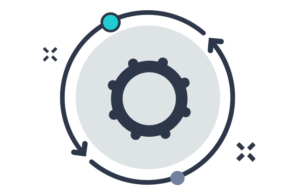Automation vs. Orchestration: What’s the Difference?


Whether your applications and data are housed on-premise or in the cloud, automation and orchestration make complex business processes run smoothly. The more workloads you’re managing, the more helpful these tools will be no matter what your IT strategy is.
To understand automation vs. orchestration, it’s helpful to consider each function on its own, first.
What is IT automation?
Automation, generally speaking, means completing a single task or function without human intervention. Executed wisely, automation makes traditionally time-intensive, manual processes more efficient and reliable.
In IT, it’s possible to automate a wide range of processes and tasks, from app deployment and integration, to securing endpoints and creating service tickets, for both on-premise and cloud tasks. In cloud automation, for instance, you might use automation tools and machine learning to dynamically deploy assets to the cloud, manage cloud computing workloads or classify terabytes of images—something our partner, Google Cloud, can help you do.
What is orchestration?
At its core, Orchestration is most akin to managing a large-scale virtual environment or network. Orchestrating the scheduling and integration of automated tasks between complex distributed systems and services—whether on-premise or in the cloud—streamlines and simplifies interconnected workloads, repeatable processes, and operations. Using today’s orchestration tools, you can automate the arrangement, coordination and management of complex computer systems, middleware and services within your computing environment, and direct automated processes to support larger workflows.
With modern IT teams now responsible for managing hundreds to thousands of applications and servers, manual administration simply can’t scale today’s needs. Orchestration is essential for delivering highly available, dynamically scaling, performant applications, and cloud systems, relieving your team of a very heavy burden.